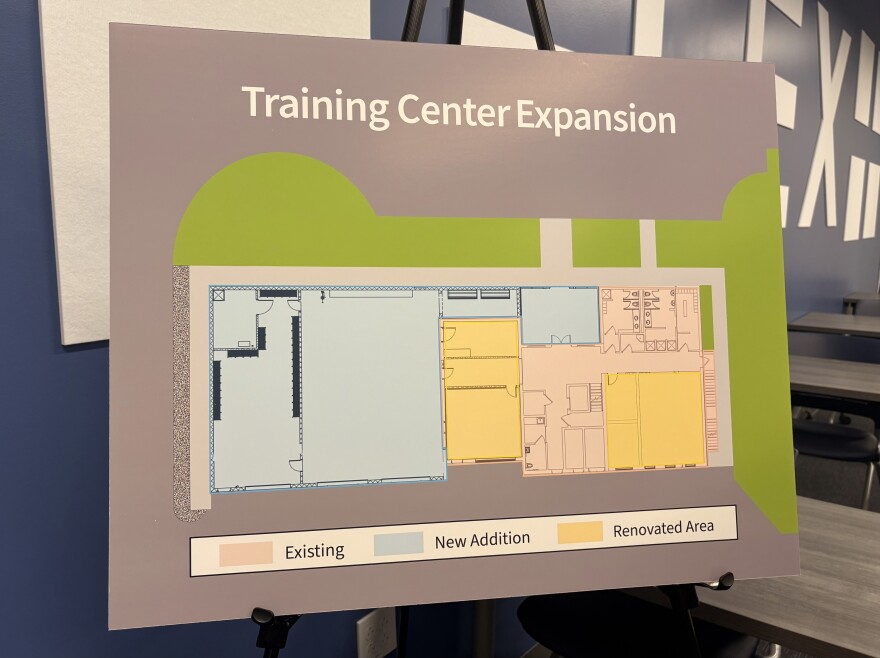A map on the wall is covered in red pens stretching from Bellingham, Washington to West Palm Beach, Florida. Emergency departments from airports all across the United States come here to complete annually-required trainings.
"There's a couple hundred airports across the country," said Eric Frankl, President and CEO of Blue Grass Airport. "Everybody has to go through this training, and everybody has 10, 20, 30 firefighters."
This facility hosts more than a thousand firefighters a year, including teams from Cincinnati, Louisville, Knoxville, and Nashville airports.
"But this expansion really allowed us to accomodate larger airports," said Frankl. "We have airports all over the country of all sizes that can come and do their training now."

Blue Grass Airport has been training their own staff since the '80s, and established a dedicated training facility in 1997. This expansion is a decade in the making and, including last year's installation of a fire simulator shapped like a 747, totaled
The expansion is a decade in the making and includes last year’s installation of fire simulator modeled after the Boeing 727 and Airbus A320. It can demonstrate 28 different fire scenarios, mimicing conditions airport firefighters may encounter in a real emergency, including internal fires in the cockpit or gallery and external fires under the wing or in the undercarriage. Firefighters with local municipal fire departments have also trained at this facility to be emergency-ready.
The building's expansion, related upgrades, and the installation of the fire trainers totaled about $15 million, with 90% of the cost funded by the FAA. Now, only one upgrade remains before the 10-year plan is complete.
"If you go outside, you'll see a fire truck, which is the fire truck for the airport," said Frankl, speaking of the highlighter-yellow airport crash tender parked outside - a Rosenbauer Panther.
"But now, we'll have a separate fire truck for this training facility that they can train on without affecting the operation of the airport."


